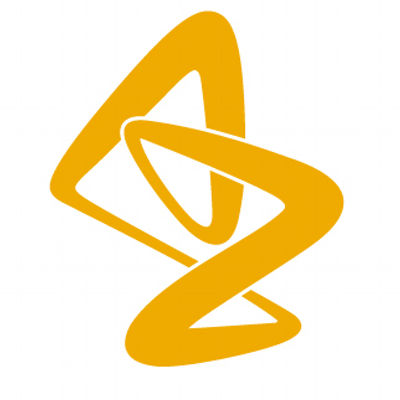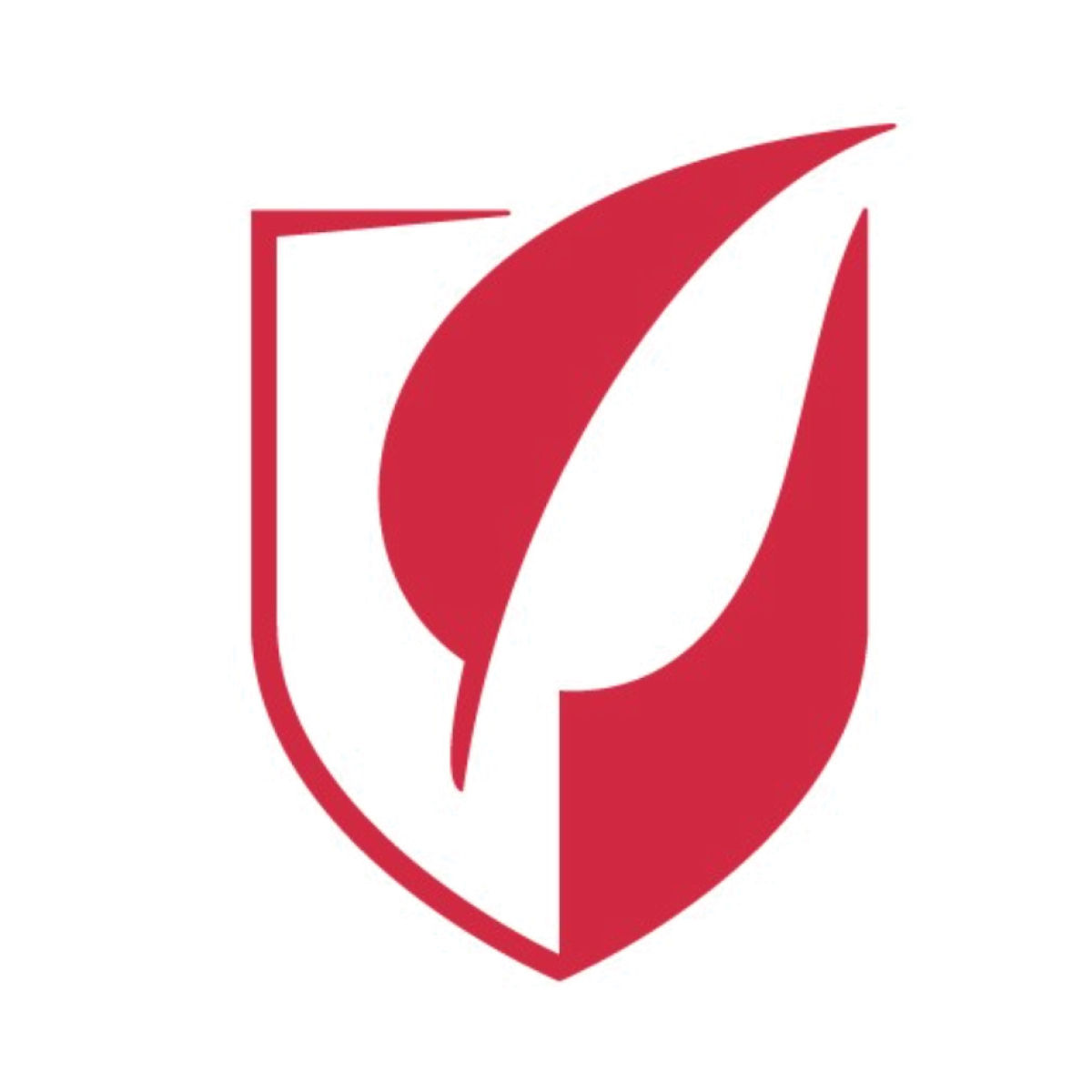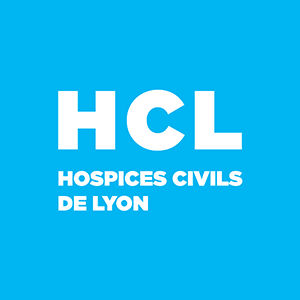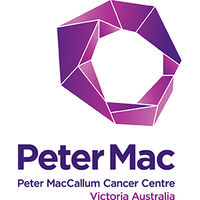预约演示
更新于:2025-05-07
thymic carcinoma
胸腺癌
更新于:2025-05-07
基本信息
别名- |
简介- |
关联
32
项与 胸腺癌 相关的药物靶点 |
作用机制 PI3Kδ抑制剂 |
在研机构 |
原研机构 |
非在研适应症 |
最高研发阶段批准上市 |
首次获批国家/地区 中国 |
首次获批日期2022-11-08 |
靶点 |
作用机制 CTLA4抑制剂 |
在研机构 |
原研机构 |
最高研发阶段批准上市 |
首次获批国家/地区 美国 |
首次获批日期2022-10-21 |
作用机制 TOP1抑制剂 [+1] |
最高研发阶段批准上市 |
首次获批国家/地区 美国 |
首次获批日期2020-04-22 |
91
项与 胸腺癌 相关的临床试验NCT06790706
IMMUNORARE5: A National Platform of 5 Academic Phase II Trials Coordinated by Lyon University Hospital to Assess the Safety and the Efficacy of the IMMUNOtherapy With Domvanalimab + Zimberelimab Combination in Patients With Advanced RARE Cancers
Immune checkpoint inhibitors (ICI) have revolutionized the management of advanced cancers. However, most rare cancers have been excluded from this progress due to the lack of clinical trials involving these diseases. After the standard first-line treatment, there are no other validated treatments for most of them. The management of these patients in ≥ 2nd line treatment relies on historic poorly effective regimens.
This creates an inequity between patients with frequent cancers beneficiating from medical progresses and approvals of innovative drugs, and patients with rare cancers are still treated with old and toxic drugs.
Few available data on case reports and early phase studies indicate a beneficial role of the immunotherapy in rare cancers.
The investigators assume that the combination of Domvanalimab and Zimberelimab is more effective than historical standard treatments in patients with 5 types of advanced rare cancers, after failure of at least one line of standard treatment in the advanced setting:
* Cohort 1: Peritoneal Mesotheliomas (PM)
* Cohort 2: Gestational Trophoblastic Tumors (GTT)
* Cohort 3: B3 Thymomas and Thymic Carcinomas (TET)
* Cohort 4: Refractory Thyroid Carcinomas (ATC)
* Cohort 5: GEP-NET and carcinoid tumors (GEP-NET (Gastroenteropancreatic neuroendocrine tumors)/TCT (Thoracic carcinoid tumor)/UP-NET (Neuroendocrine tumor of unknown primary))
The primary objective is to assess the efficacy of the combination of Domvanalimab and Zimberelimab in terms of progression-free survival rate at 24 weeks (for cohorts 1,3,5), successful hCG (Human Chorionic Gonadotropin) normalisation rate at 24 weeks for cohort 2 and survival rate for cohort 4.
The secondary objectives are to assess the efficacy of the combination of anti-TIGIT (T cell Immunoreceptor with Ig and ITIM domains) and anti-PD-1 (Programmed Death-1) immunotherapies in terms of overall response rate, progression-free survival (cohort 1-3 and 5), resistance-free survival (cohort 2), overall survival (cohorts 1-3 and 5), duration of the response (cohorts 1-3 and 5); and to assess the tolerability of the doublet of immunotherapy in terms of adverse events.
Patients will be treated until disease progression or alternatively 2 years in case of complete response (upon discussion with the coordinator of the study, the coordinator of the cohort and the investigator), unacceptable toxicity, or death. At the end of treatment, patients will be followed up for at least 1 year.
IMMUNORARE5 is composed of five independent open-label national multicenter single-arm phase II trials, sponsored by Lyon University Hospital, led in collaboration with the corresponding French national reference centers, with a centralized coordination by a dedicated team.
Each phase II trial is designed as a two-stage Simon design, with early termination for futility. For each cohort, a null hypothesis (H0) and an alternative hypotheses (H1) regarding the percentages of patients with success has been defined, with 5% one-sided alpha level and 80% power.
The trial will be conducted in 15 French Centers with an inclusion period of 36 months
This creates an inequity between patients with frequent cancers beneficiating from medical progresses and approvals of innovative drugs, and patients with rare cancers are still treated with old and toxic drugs.
Few available data on case reports and early phase studies indicate a beneficial role of the immunotherapy in rare cancers.
The investigators assume that the combination of Domvanalimab and Zimberelimab is more effective than historical standard treatments in patients with 5 types of advanced rare cancers, after failure of at least one line of standard treatment in the advanced setting:
* Cohort 1: Peritoneal Mesotheliomas (PM)
* Cohort 2: Gestational Trophoblastic Tumors (GTT)
* Cohort 3: B3 Thymomas and Thymic Carcinomas (TET)
* Cohort 4: Refractory Thyroid Carcinomas (ATC)
* Cohort 5: GEP-NET and carcinoid tumors (GEP-NET (Gastroenteropancreatic neuroendocrine tumors)/TCT (Thoracic carcinoid tumor)/UP-NET (Neuroendocrine tumor of unknown primary))
The primary objective is to assess the efficacy of the combination of Domvanalimab and Zimberelimab in terms of progression-free survival rate at 24 weeks (for cohorts 1,3,5), successful hCG (Human Chorionic Gonadotropin) normalisation rate at 24 weeks for cohort 2 and survival rate for cohort 4.
The secondary objectives are to assess the efficacy of the combination of anti-TIGIT (T cell Immunoreceptor with Ig and ITIM domains) and anti-PD-1 (Programmed Death-1) immunotherapies in terms of overall response rate, progression-free survival (cohort 1-3 and 5), resistance-free survival (cohort 2), overall survival (cohorts 1-3 and 5), duration of the response (cohorts 1-3 and 5); and to assess the tolerability of the doublet of immunotherapy in terms of adverse events.
Patients will be treated until disease progression or alternatively 2 years in case of complete response (upon discussion with the coordinator of the study, the coordinator of the cohort and the investigator), unacceptable toxicity, or death. At the end of treatment, patients will be followed up for at least 1 year.
IMMUNORARE5 is composed of five independent open-label national multicenter single-arm phase II trials, sponsored by Lyon University Hospital, led in collaboration with the corresponding French national reference centers, with a centralized coordination by a dedicated team.
Each phase II trial is designed as a two-stage Simon design, with early termination for futility. For each cohort, a null hypothesis (H0) and an alternative hypotheses (H1) regarding the percentages of patients with success has been defined, with 5% one-sided alpha level and 80% power.
The trial will be conducted in 15 French Centers with an inclusion period of 36 months
开始日期2025-05-01 |
申办/合作机构 |
NCT06838910
Tislelizumab Combined With Anlotinib as Second-line Therapy in Thymoma and Thymic Carcinoma: An Open-label, Single-centre, Phase 2 Study
It is an open-lable, single-arm, single-center, phase II clinical trial conducted in China, and plan to recruiting 20 patients who were progressed after first line chemotherapy or chemotherapy combined with immunotherapy. The purpose of this study is to evaluate the safety and efficacy of tislelizumab combined with anlotinib as second-line in thymoma and thymic carcinoma.
开始日期2025-03-01 |
申办/合作机构 |
ACTRN12625000038493
AUstralasian thoRacic cancers lOngitudinal cohoRt study and biobAnk (AURORA)
开始日期2025-01-20 |
100 项与 胸腺癌 相关的临床结果
登录后查看更多信息
100 项与 胸腺癌 相关的转化医学
登录后查看更多信息
0 项与 胸腺癌 相关的专利(医药)
登录后查看更多信息
1,992
项与 胸腺癌 相关的文献(医药)2025-05-01·Clinical Lung Cancer
Phase II Parallel Arm Study of Sacituzumab Govitecan-Hziy in Patients With Advanced Thymoma or Thymic Carcinoma
Article
作者: Kim, Chul ; Liu, Stephen V ; Ahn, Jaeil ; Reuss, Joshua E ; Altan, Mehmet ; Gutierrez, Martin E ; Wakelee, Heather ; Barbie, David ; Garassino, Marina C ; Marks, Jennifer A ; Riely, Gregory J
2025-05-01·JTO Clinical and Research Reports
Yttrium-90 Radioembolization for Hepatic Metastases Secondary to Thymic Malignancies: A Case Report
Article
作者: Ziv, Etay ; Zhao, Ken ; Alexander, Erica S ; Marinelli, Brett ; Petre, Elena N ; Sotirchos, Vlasios ; Yuan, Gavin
2025-05-01·Clinical Lung Cancer
Efficacy and Safety of Atezolizumab in Chinese Patients With Advanced Thymic Carcinoma: A Multicenter, Single-Arm Phase 2 Study
Article
作者: Zhou, Yi ; Hu, Jian ; Chen, Mo ; Li, Qiang ; Shi, Yanjun ; Chen, Chun ; Ma, Xuezhen ; Lu, Shun ; Liu, Lunxu ; Hu, Xiufeng ; Yang, Zhenzhou ; Wang, Changli ; Hu, Dandan ; He, Jianxing
93
项与 胸腺癌 相关的新闻(医药)2025-04-29
·恒瑞医药
美国临床肿瘤学会(ASCO)年会是全球最大的肿瘤治疗领域国际会议之一。今年ASCO年会将于美国芝加哥当地时间5月30日~6月3日举行。近日,ASCO官网公布了本次年会的研究摘要题目。作为创新型国际化制药企业的恒瑞医药,肿瘤领域产品相关研究再获高度认可,目前已确定有69项研究入选本次会议,其中创新药研究67项。包括4项口头报告(Oral)、5项快速口头报告(Rapid Oral)、24项壁报展示(Poster)、36项线上发表(Publication Only)1。研究成果涵盖消化系统肿瘤、乳腺癌、肺癌、妇科肿瘤、泌尿肿瘤、黑色素瘤、头颈肿瘤、肉瘤、鼻咽癌、血液肿瘤和硬纤维瘤等十余个肿瘤治疗领域。涉及的创新药包括6款已上市创新产品:注射用卡瑞利珠单抗(艾瑞卡®)、甲磺酸阿帕替尼片(艾坦®)、马来酸吡咯替尼片(艾瑞妮®)、羟乙磺酸达尔西利片(艾瑞康®)、阿得贝利单抗注射液(艾瑞利®)、氟唑帕利胶囊(艾瑞颐®),以及9款未上市创新产品:抗PD-L1/TGF-βRII双抗瑞拉芙普-α(SHR-1701)、多靶点受体酪氨酸激酶抑制剂法米替尼、IL-15融合蛋白SHR-1501、双特异性抗体SHR-2017、全人源抗CTLA-4单克隆抗体SHR-8068、抗体偶联药物(ADC)瑞康曲妥珠单抗(SHR-A1811)、SHR-1826、SHR-A1912、SHR-A2102。2类新药盐酸伊立替康脂质体注射液(II)(越优力®)及国内首仿药昂丹司琼口溶膜(艾其速®)各有1项研究入选。019项创新药研究成果入选口头报告和快速口头报告本次ASCO年会,将由中山大学肿瘤防治中心张阳教授、上海市胸科医院钟润波教授、复旦大学附属肿瘤医院季冬梅教授、上海长征医院杨诚教授分别就4项恒瑞医药创新产品相关研究带来口头报告,包括SHR-1826治疗实体瘤、SHR-A2102治疗实体瘤、瑞康曲妥珠单抗(SHR-A1811)治疗唾液腺癌,以及卡瑞利珠单抗联合阿帕替尼治疗脊索瘤。此外,复旦大学附属肿瘤医院邵志敏教授、河南省肿瘤医院闫敏教授、复旦大学附属肿瘤医院李婷教授、湖南省肿瘤医院李亚军教授、北京大学肿瘤医院毛丽丽教授将分别带来快速口头报告,内容涉及达尔西利治疗乳腺癌、瑞康曲妥珠单抗(SHR-A1811)治疗乳腺癌、阿得贝利单抗治疗乳腺癌、SHR-A1912治疗淋巴瘤以及卡瑞利珠单抗联合阿帕替尼治疗黑色素瘤。本次ASCO年会共有9项研究成果入选口头报告和快速口头报告,充分彰显了恒瑞医药在创新药物研发领域的深厚积累与卓越实力,有力证明了公司在全球学术舞台上的竞争力,同时也是我国医药创新高质量发展的重要例证。(2025 ASCO恒瑞产品相关研究4项入选口头报告,5项入选快速口头报告)02消化系统肿瘤领域:卡瑞利珠单抗续写新篇章在消化系统肿瘤领域,卡瑞利珠单抗、阿帕替尼、阿得贝利单抗、SHR-8068等创新药,共有28项研究入选(包括6项壁报和22项线上发表)。其中卡瑞利珠单抗占据20项,全面展现其显著特点与潜力,继续续写国产PD-1抑制剂崭新篇章。此外,在肺癌领域收获亮眼成绩的阿得贝利单抗也在积极探索新的适应症,本次ASCO大会分别有肝癌、胆管癌、胰腺癌等4项相关研究入选。这些新老药物前沿研究的不断出现,有望为消化系统肿瘤患者带来更多获益!03乳腺癌领域:吡咯替尼、达尔西利持续发力引关注在乳腺癌领域,吡咯替尼、达尔西利、卡瑞利珠单抗、阿帕替尼、阿得贝利单抗、瑞康曲妥珠单抗(SHR-A1811)、SHR-2017,或产品间联合或联合化疗,共有19项研究入选(包括3项快速口头报道和7项壁报展示以及9项线上发表)。其中吡咯替尼占据7项、达尔西利占据6项,持续发力展现令人鼓舞的疗效;而瑞康曲妥珠单抗(SHR-A1811)、阿得贝利单抗等药物相关研究入选快速口头报告,获得业内广泛关注。04其他肿瘤领域:多维突破,彰显强劲综合实力在肺癌、妇科肿瘤、淋巴瘤、膀胱癌、头颈肿瘤、黑色素瘤、肉瘤、鼻咽癌、脊索瘤、唾液腺癌、胸腺癌、硬纤维瘤、涎腺导管癌等其他多个疾病领域,卡瑞利珠单抗、阿帕替尼、阿得贝利单抗、吡咯替尼、达尔西利、氟唑帕利、法米替尼、SHR-1501、瑞拉芙普-α(SHR-1701)、SHR-1826、瑞康曲妥珠单抗(SHR-A1811)、SHR-A1912、SHR-A2102等抗肿瘤创新药相关研究一共入选了4项口头报告、2项快速口头报告、11项壁报展示和4项线上发表,彰显了恒瑞医药强劲的研发实力。此外,昂丹司琼口溶膜在防治化疗导致的恶心呕吐方面展现出了良好的疗效,本次ASCO年会有1项研究线上发表。《“健康中国2030”规划纲要》提出总体癌症5年生存率提高15%的目标。抗肿瘤药物是癌症患者改善生存、延长生命的重要希望。作为创新型国际化制药企业,恒瑞医药五十余年来始终践行“科技为本,为人类创造健康生活”的使命,深耕肿瘤药物等高品质创新药研发,目前已在中国获批上市19款新分子实体药物(1类创新药),其中抗肿瘤药占比过半。另有90多个自主创新产品正在临床开发,约400项临床试验在国内外开展。本次ASCO年会上,恒瑞医药多项创新产品研究成功入选,不仅彰显了公司在药物研发领域的深厚实力,更让全球肿瘤学界见证了中国医药创新的蓬勃力量。未来,恒瑞医药将持续“以患者为中心”加速创新研发步伐,致力于推出更多新药好药,服务健康中国,造福全球患者。参考文献:1.https://meetings.asco.org/abstracts-presentations/search?query=*&q=2025%20ASCO%20Annual%20Meeting声明:1.本新闻旨在分享学术前沿动态,仅供医疗卫生专业人士基于学术目的参阅,非广告用途。2.恒瑞医药不对任何药品和/或适应症作推荐。3.本新闻中涉及的信息仅供参考,请遵从医生或其他医疗卫生专业人士的意见或指导。医疗卫生专业人士作出的任何与治疗有关的决定应根据患者的具体情况并遵照药品说明书。撰稿:肿瘤中央医学事务部排版:程梦真责编:李玉莹往期精选| 研发创新 |恒瑞创新药、中国首个自主研发JAK1抑制剂硫酸艾玛昔替尼片获批上市全球首个超长效PCSK9单抗!恒瑞降脂创新药瑞卡西单抗获批上市| 国际化 |恒瑞医药与默沙东就Lp(a)抑制剂HRS-5346签订独家许可协议| 重磅奖项 |喜报!恒瑞医药荣获2023年度国家科技进步奖恒瑞医药连续六年入选全球制药企业50强榜单!| 社会公益 |“健康中国行·重走长征路”项目启动仪式圆满举行!恒瑞提供公益支持,助力健康中国恒瑞医药集团向中国扶贫基金会捐赠3000万设立“健康帮扶基金”
ASCO会议抗体药物偶联物临床结果申请上市临床1期
2025-04-28
·肿瘤界
点击蓝字 关注我们前言作为肿瘤学领域的国际盛会,ASCO年会每年都吸引着来自世界各地的顶尖学者、临床专家与科研团队,共同分享最新研究成果、探讨创新疗法、展望未来趋势。随着2025年ASCO年会完整日程的正式公布,全球肿瘤学界的目光再次聚焦于此。在这场学术盛宴中,肺癌领域的中国研究入选46项。汇总如下,让我们先睹为快!摘要号:8021壁报编号:142研究名称(英文):Adjuvant icotinib of 12 months versus observation as adjuvant therapy for completely resected EGFR-mutated stage IB non-small-cell lung cancer: 5-year update from CORIN (GASTO1003).研究名称(中文):12个月的埃克替尼辅助治疗对比观察疗法辅助治疗完全切除的EGFR突变IB期NSCLC:CORIN研究(GASTO1003)的5年更新讲者:王思愚 中山大学孙逸仙纪念医院深汕中心医院摘要号:8024壁报编号:145研究名称(英文):Ensartinib as postoperative adjuvant therapy in patients with ALK-positive non-small cell lung cancer (NSCLC): A registered, retrospective, real-world study.研究名称(中文):恩沙替尼作为术后辅助治疗在ALK阳性NSCLC患者中的应用:一项注册的、回顾性的真实世界研究讲者:Lin Wang 国家癌症中心摘要号:8025壁报编号:146研究名称(英文):Molecular profiling of neoadjuvant immunochemotherapy and identification of residual cancer cells in pCR NSCLC: A single-cell analysis of CTONG 1804 clinical trial. 新辅助免疫化疗的分子特征分析及在病理完全缓解(pCR)的NSCLC中残留癌细胞的识别:CTONG 1804临床试验的单细胞分析讲者:SiYang Maggie Liu 广东省肺癌研究所 摘要号:8030壁报编号:151研究名称(英文):Genomic and immunophenotypic landscape of early-stage pulmonary carcinoid tumors.研究名称(中文):早期肺类癌肿瘤的基因组和免疫表型特征讲者:苏春霞 同济大学附属上海市肺科医院摘要号:8043壁报编号:164研究名称(英文):Safety and efficacy of radiotherapy combined with anlotinib in locally advanced non-small cell lung cancer patients intolerant to concurrent chemoradiotherapy: Preliminary result of a phase II clinical trial.研究名称(中文):放疗联合安罗替尼治疗不能耐受同步放化疗的局部晚期NSCLC患者的疗效和安全性: 一项II期临床试验的初步结果讲者:Yupei Yuan 中国医学科学院肿瘤医院摘要号:8044壁报编号:165研究名称(英文):Clinical characteristics and prognosis of pulmonary lymphoepithelioma-like carcinoma: A multicentre retrospective study.研究名称(中文):肺淋巴上皮瘤样癌的临床特征和预后:一项多中心回顾性研究讲者:Zan Hou 四川省肿瘤医院 摘要号:8045壁报编号:166研究名称(英文):Neoadjuvant immunotherapy and surgery in patients with stage IIIB-IIIC (N3) non-small cell lung cancer.研究名称(中文):新辅助免疫治疗和手术用于IIIB-IIIC期(N3)NSCLC患者讲者:Wen-Yu Zhai 中山大学肿瘤防治中心摘要号:8049壁报编号:170研究名称(英文):A prospective, single-arm, phase II study to evaluate the efficacy and safety of perioperative tislelizumab in resectable non-small-cell lung cancer (NSCLC)研究名称(中文):一项用于评估替雷利珠单抗围术期治疗可切除NSCLC的疗效和安全性的前瞻性、单臂、II期研究讲者:孙大强 天津市胸科医院 摘要号:8055壁报编号:176研究名称(英文):Lung cancer screening in high-risk never-smokers with artificial intelligence (LC-SHIELD study).研究名称(中文):使用人工智能对高危从不吸烟者进行肺癌筛查(LC-SHIELD研究)讲者:Molly SC Li 香港中文大学摘要号:8057壁报变化:178研究名称(英文):Enhancing early detection of lung cancer: Methylation anchor probe for low-signal enrichment (MAPLE).研究名称(中文):增强肺癌的早期检测: 低信号富集的甲基化锚定探针 (MAPLE)讲者:钟文昭 广东省肺癌研究所摘要号:8062壁报编号:183研究名称(英文):Differential prognostic significance of distant and locoregional recurrence on survival in surgically resected non-small cell lung cancer post-chemotherapy: Multicenter dynamic prediction with landmark model.研究名称(中文):手术切除的NSCLC化疗后远处和局部复发对生存的差异预后意义: landmark模型的多中心动态预测讲者:Zeliang Ma 国家癌症中心摘要号:8063壁报编号:184研究名称(英文):Neoadjuvant hypofractionated radiotherapy plus tislelizumab with anlotinib followed by adjuvant tislelizumab with anlotinib in patients with resectable non-small cell lung cancer (NSCLC): Preliminary analysis of a phase II trial (NEO-PIONEER).研究名称(中文):可切除NSCLC患者接受新辅助低分次放疗联合替雷利珠单抗和安罗替尼治疗,随后进行替雷利珠单抗和安罗替尼辅助治疗:II期NEO-PIONEER研究的初步分析讲者:方敏 浙江省肿瘤医院摘要号:8073壁报编号:194研究名称(英文):Sequential versus concurrent strategy of immunotherapy and radiotherapy in advanced non-small-cell lung cancer: A territory-wide multicenter study (OCEANUS study).研究名称(中文):晚期NSCLC免疫治疗和放疗的序贯与同期策略:一项全地区多中心研究(OCEANUS研究)讲者:Han Zhou 香港大学深圳医院摘要号:8076壁报编号:197研究名称(英文):A retrospective study of induction immunochemotherapy followed by definitive chemoradiotherapy and consolidation immunotherapy in unresectable locally advanced non-small cell lung cancer.研究名称(中文):一项关于不可切除的局部晚期NSCLC的回顾性研究:诱导免疫化疗后进行根治性放化疗和巩固免疫治疗讲者:Yuliang Meng 山东省肿瘤医院 摘要号:8090壁报编号:211研究名称(英文):Efficacy and safety of envafolimab plus carboplatin and etoposide as first-line treatment for extensive-stage small-cell lung cancer: A prospective, single-arm, phase II trial.研究名称(中文):恩沃利单抗联合卡铂和依托泊苷一线治疗广泛期ES-SCLC的疗效和安全性:一项前瞻性、单臂、II期试验讲者:孙胜杰 解放军总医院摘要号:8093壁报编号:214研究名称(英文):Serplulimab versus placebo plus chemotherapy as first-line treatment for extensive-stage small-cell lung cancer: Efficacy and safety from the end-of-study analysis of the international phase 3 ASTRUM-005 study.研究名称(中文):斯鲁利单抗联合化疗对比安慰剂联合化疗作为ES-SCLC一线治疗:国际III期ASTRUM-005研究的终止研究分析中的疗效和安全性讲者:程颖 吉林省肿瘤医院摘要号:8097壁报编号:218研究名称(英文):Efficacy and safety of HTMC0435 combination with temozolomide in relapsed extensive-stage small-cell lung cancer (ES-SCLC): A phase Ib/II study.研究名称(中文):HTMC0435联合替莫唑胺治疗复发性ES-SCLC)的疗效和安全性: Ib/II期研究讲者:范云 浙江省肿瘤医院摘要号:8101壁报编号:222研究名称(英文):Multi-omic analysis and overall survival update of phase II TRIDENT study: Durvalumab plus olaparib in extensive-stage small-cell lung cancer (ES-SCLC).研究名称(中文):II期TRIDENT研究的多组学分析和总体生存更新:度伐利尤单抗联合奥拉帕利治疗ES-SCLC讲者:赵媛媛 中山大学肿瘤防治中心摘要号:8105壁报编号:226研究名称(英文):Association of IFITM3 with the efficacy of anti-PD1/PD-L1 therapy and regulation of immunosensitivity via MHC-I regulation in SCLC.研究名称(中文):IFITM3与SCLC中抗PD1/PD-L1治疗疗效的关联及其通过MHC-I调节免疫敏感性的机制讲者:任胜祥 同济大学附属上海市肺科医院摘要号:8109壁报编号:230研究名称(英文):A prospective, single-arm, phase II trial of adebrelimab plus nab-paclitaxel and carboplatin in patients with unresectable advanced metastatic or recurrent thymic carcinomas.研究名称(中文):阿得贝利单抗联合白蛋白结合型紫杉醇和卡铂治疗不可切除的晚期转移性或复发性胸腺癌的前瞻性、单臂、II期临床研究讲者:许宁 上海市胸科医院摘要号:8110壁报编号:231研究名称(英文):Combining SBRT with GM-CSF and peg-IFNα to induce abscopal effects in previously treated patients with stage IV thymic tumors: A single arm, single center, phase II trial.研究名称(中文):将立体定向体部放射治疗(SBRT)与粒细胞-巨噬细胞集落刺激因子(GM-CSF)和聚乙二醇干扰素α(peg-IFNα)结合诱导经治IV期胸腺肿瘤患者的远隔效应:单臂、单中心、II期试验讲者:樊旼 复旦大学附属肿瘤医院摘要号:8529壁报编号:9研究名称(英文):Sacituzumab tirumotecan (sac-TMT) in combination with tagitanlimab (anti-PD-L1) in first-line (1L) advanced non-small-cell lung cancer (NSCLC): Non-squamous cohort from the phase II OptiTROP-Lung01 study.研究名称(中文):芦康沙妥珠单抗 (sac-TMT) 联合塔戈利单抗(抗PD-L1) 一线治疗晚期NSCLC:II期 OptiTROP-Lung01 研究的非鳞状细胞亚组分析讲者:方文峰 中山大学肿瘤防治中心摘要号:8531壁报编号:11研究名称(英文):Tumor-derived ILT5 and suppression of T cell immunity in non-small cell lung cancer.研究名称(中文):肿瘤来源的ILT5及其在NSCLC中对T细胞免疫的抑制讲者:Xuebing Fu 山东省肿瘤医院摘要号:8542壁报编号:22研究名称(英文):Prediction of site-specific immune-related adverse events of PD-L1 blockade in advanced non-small cell lung cancer through baseline organ-metastatic landscape: Pooled post-hoc analyses of two randomized controlled trials.研究名称(中文): 通过基线器官转移情况预测晚期NSCLC癌患者在PD-L1阻断治疗过程中发生部位特异性免疫相关不良事件:两项随机对照试验的汇总事后分析讲者:Si-Heng Wang 中山大学附属第一医院摘要号:8543壁报编号:23研究名称(英文):A phase II trial to evaluate the safety and efficacy of SSGJ-707, a bispecific antibody targeting PD-1 and VEGF, as a monotherapy in patients with advanced NSCLC研究名称(中文):一项评估靶向PD-1和VEGF的双特异性抗体SSGJ-707单药治疗晚期NSCLC患者的疗效和安全性的II期临床试验讲者:邬麟 湖南省肿瘤医院摘要号:8546壁报编号:26研究名称(英文):Association between pretreatment emotional distress and survival outcomes in patients with advanced non–small-cell lung cancer: An individual patient data meta-analysis of 4632 patients in 7 trials.研究名称(中文):晚期NSCLC患者治疗前情绪困扰与生存结果之间的关联:基于7项试验中4632例患者的个体患者数据的荟萃分析讲者:周建国 遵义医科大学第二附属医院摘要号:8548壁报编号:28研究名称(英文):Camrelizumab combined with 2 cycles of chemotherapy as first-line treatment for advanced non-small cell lung cancer (NSCLC): A two-arm, single-center, phase 2 study.研究名称(中文):卡瑞利珠单抗联合2个周期化疗一线治疗晚期NSCLC:一项双组单中心II期研究讲者:刘红兵 南京医科大学第二附属医院摘要号:8553壁报编号:33研究名称(英文):Circulating CD28-KLRG1+CD8+ T cells as prognostic indicators in advanced NSCLC chemoimmunotherapy.研究名称(中文):循环CD28-KLRG1+CD8+ T细胞作为晚期NSCLC化学免疫治疗的预后指标讲者:颜次慧 天津医科大学肿瘤医院摘要号:8559壁报编号:39研究名称(英文):Predictive value of circulating tumor DNA detection for long-term survival in patients with advanced lung cancer undergoing chemoimmunotherapy研究名称(中文):循环肿瘤DNA检测对于接受化学免疫治疗的晚期肺癌患者长期生存的预测价值讲者:李晖 浙江省肿瘤医院摘要号:8560壁报编号:40研究名称(英文):Phase 2 study of pembrolizumab (pembro) plus plinabulin (plin) and docetaxel (doc) for patients (pts) with metastatic NSCLC after progression on first-line immune checkpoint inhibitor alone or combination therapy: Initial efficacy and safety results on immune re-sensitization.研究名称(中文):帕博利珠单抗联合普那布林和多西他赛治疗在一线免疫检查点抑制剂单独或联合治疗后出现进展的转移性NSCLC患者的II期研究:免疫再致敏的初步疗效和安全性结果讲者:徐雁 中国医学科学院北京协和医院摘要号:8561壁报编号:41研究名称(英文):A phase 2 study of HLX07 plus serplulimab with or without chemotherapy versus serplulimab plus chemotherapy as first-line therapy in advanced squamous non-small cell lung cancer.研究名称(中文):HLX07联合斯鲁利单抗加或不加化疗对比斯鲁利单抗联合化疗一线治疗晚期鳞状NSCLC的II期研究讲者:吴一龙 广东省人民医院摘要号:8564壁报编号:44研究名称(英文):Efficacy and safety of metronomic oral vinorelbine combined with PD-1 inhibitors as first-line therapy in advanced non-small-cell lung cancer in elderly patients.研究名称(中文):口服长程低剂量长春瑞滨联合PD-1抑制剂作为老年晚期NSCLC患者一线治疗的疗效和安全性讲者:Yumeng Tian 北京大学肿瘤医院摘要号:8570壁报编号:50研究名称(英文):SMET12 and toripalimab combined chemotherapy in patients with advanced non-small cell lung cancer who are treatment-naive or have developed resistance to standard therapy研究名称(中文):SMET12和特瑞普利单抗联合化疗用于初治或对标准治疗产生耐药的晚期NSCLC患者讲者:林景辉 福建省肿瘤医院摘要号:8571壁报编号:51研究名称(英文):Exploratory study on the impact of intestinal low-dose radiation on the efficacy and prognosis of immunotherapy in metastatic non-small cell lung cancer.研究名称(中文):探讨肠道低剂量放疗对转移性NSCLC免疫治疗疗效及预后的影响讲者:Baiyang Huang 山东省肿瘤医院摘要号:8573壁报编号:53研究名称(英文):First-line envafolimab in combination with recombinant human endostatin and chemotherapy for advanced squamous non-small cell lung cancer: Updated results from a prospective, single-arm, multicenter phase II study.研究名称(中文):恩沃利单抗联合重组人血管内皮抑制素和化疗用于晚期鳞状NSCLC的一线治疗:来自一项前瞻性、单组、多中心 II 期研究的更新结果讲者:刘联 山东大学齐鲁医院摘要号:8600壁报编号:80研究名称(英文):A retrospective study of anlotinib plus third-generation EGFR-TKIs in advanced non-small cell lung cancer with gradual or oligo progression after EGFR-TKIs treatment (ALTER-L058). 安罗替尼联合第三代EGFR-TKIs治疗在接受过EGFR-TKIs治疗后出现渐进性或寡进展的晚期NSCLC的回顾性研究(ALTER-L058)讲者:周彩存 同济大学附属东方医院摘要号:8601壁报编号:81研究名称(英文):First-in-human phase I/II study of BYS10 in patients (pts) with locally advanced or metastatic RET-altered solid tumors: Preliminary dose escalation results.研究名称(中文):BYS10在局部晚期或转移性RET突变的实体瘤患者中的首次人类I/II期研究:初步剂量递增结果讲者:王洁 中国医学科学院肿瘤医院摘要号:8602壁报编号:82研究名称(英文):Dysregulation of DNA damage repair in lung cancer driven by MTAP loss: Mechanistic insights and target discovery. MTAP缺失导致的肺癌DNA损伤修复失调:机制和靶点发现讲者:Bo Jiang 中山大学附属第八医院摘要号:8609壁报编号:89研究名称(英文):High-dose furmonertinib combined with bevacizumab and pemetrexed in non-small cell lung cancer patients with EGFR mutations and leptomeningeal metastasis: A prospective real-world study.研究名称(中文):高剂量伏美替尼联合贝伐珠单抗和培美曲塞用于伴有EGFR突变和脑膜转移的NSCLC患者:一项前瞻性真实世界研究讲者:Qi Zhao 河南省肿瘤医院摘要号:8615壁报编号:95研究名称(英文):Sacituzumab tirumotecan (sac-TMT) in patients (pts) with previously treated locally advanced or metastatic (LA/M) non-small cell lung cancer (NSCLC) harboring uncommon EGFR mutations: Preliminary results from a phase 2 study.研究名称(中文):芦康沙妥珠单抗 (sac-TMT) 治疗既往接受过治疗且携带罕见EGFR突变的局部晚期或转移性NSCLC患者:一项II期研究的初步结果讲者:张力 中山大学肿瘤防治中心摘要号:8616壁报编号:96研究名称(英文):Phase I/II study of DZD6008, a 4th-generation EGFR TKI with full BBB penetration, in EGFR-mutant NSCLC.研究名称(中文):具有完全穿透血脑屏障能力的第四代EGFR-TKI DZD6008在EGFR突变NSCLC中的I/II期研究讲者:王孟昭 中国医学科学院北京协和医院摘要号:8627壁报编号:107 Osimertinib plus anlotinib in patients with untreated, EGFR-mutated, advanced non-small-cell lung cancer with concurrent gene alterations: A single-arm, prospective, multicenter phase II study.研究名称(中文):奥希替尼联合安洛替尼治疗未治疗、EGFR突变、合并基因改变的晚期NSCLC患者:一项单组、前瞻性、多中心的II期研究讲者:Xiaojun Yang 东莞市人民医院摘要号:8632壁报编号:112研究名称(英文):Vebreltinib plus PLB1004 in EGFR-mutated NSCLC with acquired MET amplification or overexpression after failure on EGFR-TKI treatment: A phase Ib/II study.研究名称(中文):伯 瑞 替 尼联合PLB1004用于在EGFR-TKI治疗失败后伴随获得性MET扩增或过表达的EGFR突变NSCLC患者:一项Ib/II期研究讲者:周斐 上海市东方医院摘要号:8637壁报编号:117研究名称(英文):Efficacy and omics-based insights of TROP2 ADC in non–small cell lung cancer with or without actionable genomic alterations (AGAs).研究名称(中文):TROP2 ADC在具有或不具有可操作基因组改变 (AGAs) 的NSCLC中的疗效和基于组学的见解讲者:李岸霖 中山大学肿瘤防治中心摘要号:8638壁报编号:118研究名称(英文):Real-world data on the efficacy and safety of iruplinalkib (WX-0593) in ALK-positive advanced lung adenocarcinoma patients previously treated with lorlatinib.研究名称(中文):伊鲁阿克(WX-0593)治疗既往接受过洛拉替尼治疗的ALK阳性晚期肺腺癌患者的疗效和安全性的真实世界数据讲者:王芬 北京大学深圳医院摘要号:TPS8647壁报编号:27a研究名称(英文):TROPION-Lung14: A phase 3 study of osimertinib ± datopotamab deruxtecan (Dato-DXd) as first-line (1L) treatment for patients with EGFR-mutated locally advanced or metastatic (LA/M) non-small cell lung cancer (NSCLC).研究名称(中文):TROPION-Lung14:一项关于奥希替尼 ± datopotamab deruxtecan (Dato-DXd)作为EGFR突变局部晚期或转移性NSCLC患者一线治疗的III期研究讲者:陆舜 上海市胸科医院备注:如有遗漏或任何问题,请给我们留言~声明:本文由“肿瘤界”整理与汇编,欢迎分享转载,如需使用本文内容,请务必注明出处。来源:医脉通胸部肿瘤编辑:lagertha审核:南星
临床结果ASCO会议临床3期临床2期免疫疗法
2025-04-16
点上方蓝字“ioncology”关注我们,然后点右上角“…”菜单,选择“设为星标”ELCC 2025 微专辑扫描二维码可查看更多内容在2025年欧洲肺癌大会(ELCC)上,国际肺癌研究协会(IASLC)候任主席、上海市东方医院肿瘤科周彩存教授与2025 ELCC联合主席、意大利都灵大学胸外科Enrico Ruffini教授展开深度对话,讨论了新辅助化疗联合免疫治疗与微创手术的整合、围手术期免疫治疗患者选择、辅助治疗时长优化、降阶梯策略等议题,揭示了多学科协作下的治疗新范式。周彩存 教授主任医师、教授、博士生导师★ 上海市东方医院肿瘤科主任★ 同济大学医学院肿瘤研究所所长★ 国际肺癌研究协会(IASLC)候任主席★ 中国医促会胸部肿瘤学分会 主任委员★ 中国临床肿瘤学会非小细胞肺癌专委会 主任委员★ 中国抗癌协会非小细胞肺癌专委会 主任委员★ 中国抗癌协会肿瘤药物临床研究专业委员会 主任委员★ 上海市抗癌协会肺癌分子靶向和免疫治疗专委会 主任委员★ 中国医师协会肿瘤分会 常委★ 上海市抗癌协会 副理事长★ 上海市医师协会肿瘤分会 副会长★ 上海市医学会肿瘤分会 副主任委员Enrico Ruffini 教授意大利都灵大学胸外科全职教授2019-2021:欧洲胸外科医师学会(ESTS)主席2012-2014:国际胸腺肿瘤兴趣组(ITMIG)秘书长2012-2016:国际肺癌研究协会(IASLC)胸腺肿瘤分期与预后因素委员会成员2017-2024:IASLC胸腺肿瘤分期与预后因素委员会主席担任《欧洲心胸外科杂志》《胸部肿瘤学杂志》《肺癌》《胸部疾病杂志》等期刊审稿人,参编多部胸外科教材,发表SCI论文268篇,H指数51肿瘤瞭望:手术对于早期非小细胞肺癌(NSCLC)仍然至关重要。对于接受新辅助化疗联合免疫治疗的患者,手术是否会变得更复杂?Ruffini教授:这一问题在近年学术会议中经常被讨论,2025 ELCC专门设置了两场报告进行探讨。回顾历史经验,几十年前我为接受过化疗的患者进行手术,结果发现与直接手术相比,这类手术更加困难,主要归因于组织粘连、血管与肺实质及肿瘤存在解剖层次不清等问题。在新辅助化疗联合免疫治疗时代,手术复杂性进一步增加,可能是由于免疫治疗引发的炎症反应和纤维化(本质上属于治疗应答的病理表现)。但值得庆幸的是,外科技术也在不断进步,我们拥有更多手术技术和设备来处理术中并发症。2025 ELCC展示的研究中,绝大多数接受新辅助化疗联合免疫的患者可通过微创手术完成治疗,接受胸腔镜手术或机器人微创手术的患者术后恢复更容易,且微创手术后患者对辅助治疗的耐受性也优于开胸手术。综上,我们能让这些患者安全地实施微创手术。(上下滑动可查看)Dr. Ruffini: Thank you for the question. I think this is one of the questions we usually discuss at many conferences, and also this conference. Particularly at this conference, there will be two important presentations. One has just been done, and the other one is about to be discussed. About the complexity? Yes, surgical complexity after chemo-IO. When I was young, I started operating on patients after normal chemotherapy. We found it more difficult with respect to upfront surgery, because of adhesions, the loss of the planes between the vessels, the parenchyma and the tumor. We have found that after chemoimmunotherapy, surgery is even more difficult, probably because of inflammation and fibrosis induced by immunotherapy. This is the effect that we want of course for these patients. But on the other hand, we have developed improvements in the surgical technique. We have more technology. We have more devices, all to take care of intraoperative complications. In the series that was presented this morning, the vast majority of patients after chemoimmunotherapy could be operated by minimally invasive therapy, which is good, because patients after thoracoscopy or minimally invasive techniques are more ready to come back to normal life. The post-operative period is easier. These patients can much better tolerate adjuvant treatment compared to open access. So, we are working on this, we have the tools, and I am very confident that we can operate on these patients safely and with minimally invasive techniques.肿瘤瞭望:新辅助化疗联合免疫治疗、辅助免疫治疗和围手术期免疫治疗在可切除NSCLC患者中均积累了循证证据。哪些NSCLC患者更能从围手术期免疫治疗中获益?周教授:目前已有足够数据支持围手术期免疫治疗(新辅助化疗联合免疫治疗+辅助免疫治疗)在早期可切除NSCLC患者中的应用。综合多项试验数据,III期或II期患者可能从围手术免疫治疗中获益更多,病理完全缓解(pCR)率约为25%,这一数值在新辅助化疗中并不常见。我认为III期或II期NSCLC患者更应接受围手术期治疗,该疗法的安全性尚可接受,大部分患者的不良事件为1级或2级,且可通过常规手段管理。(上下滑动可查看)Dr. Zhou: Nowadays, we have enough data to support neoadjuvant chemo-IO and adjuvant IO in early stage resectable non-small cell lung cancer. When we look at all the data across trials, maybe stage 3 or stage 2 can get much more benefit from this therapy. The pCR rate is around 25%, which is not bad and seldom seen with neoadjuvant chemotherapy. I do think stage 3 or stage 2 get more benefit from perioperative neoadjuvant chemo-IO therapy. The safety profile of this therapy is acceptable. The majority of patients experience grade 1 or grade 2 adverse events. The majority of events are manageable with common practices. I support neoadjuvant plus adjuvant chemo-IO in the early stage NSCLC.肿瘤瞭望:2025 ELCC争议专场讨论了辅助治疗时间。请您谈一谈早期NSCLC术后辅助免疫治疗的最佳时长。周教授:这是一个尚未解答的重要问题。根据临床试验,辅助化疗通常持续约一年,但免疫治疗的时长尚无明确标准,尤其是对达到pCR的患者而言。一年的辅助免疫治疗可能过长,部分研究已探索对pCR患者进行6个月的辅助免疫治疗。无论如何,我们需要更多数据和临床试验来确定免疫治疗的理想时长。Ruffini教授:我完全同意。因为免疫治疗的疗效毋容置疑,下一步应筛选出真正能从辅助免疫治疗中获益的患者,使患者得到最大程度获益。例如,若患者术后达到pCR,理论上已治愈,没有可检测到的肿瘤,是否还需要辅助治疗?为此,我们需要寻找和评估生物标志物(如循环肿瘤DNA),以判断是否有肿瘤细胞存在于血液中的间接证据,若有证据,全身疗法用于辅助治疗是有效的。我认为下一步研究重点是对接受新辅助化疗免疫治疗和手术的患者进行筛选,以判断其应当还是不应当进行辅助治疗。周教授:我们需要生物标志物筛选适合围手术期化疗免疫治疗的患者,但目前尚无确凿的生物标志物。现有证据显示PD-L1表达可能与疗效相关,近期研究应重视循环肿瘤DNA和循环肿瘤细胞(CTC),但其检测方法仍需标准化验证。我们需要开展研究对生物标志物的预测效果进行验证,联合胸外科、肿瘤内科和转化医学等领域的科学家,共同寻找最佳生物标志物。(上下滑动可查看)Dr. Zhou: That is an important question we haven’t answered so far. According to clinical trials, the duration of adjuvant chemo is about one year. But we are not sure of the proper standard duration of immunotherapy, especially for those pCR patients. One year of immunotherapy may be too long. Some studies have investigated six months of adjuvant immunotherapy for pCR patients. Anyway, we need data. We need clinical trials to determine optimal duration of IO in these populations. What is your idea?Dr. Ruffini: I completely agree. I think the next step would be to select the patients who would benefit or not from adjuvant therapy. For the focus of our research in the coming years, we all know that immunotherapy is effective – there is no doubt about that – but we have to select the best patients in order to get the greatest benefit. For example, if after surgery, you have a pathologic complete response, should these patients receive adjuvant chemotherapy or not? In theory, they are cured. There is no detectable disease. Of course, we need some biomarkers, like circulating DNA, for example, to see if there is indirect evidence of tumor cells in the blood, and in that case, systemic therapy in an adjuvant setting might be effective. But I think the focus of the next research will be just to select the population to whom to offer or not to offer adjuvant chemotherapy after chemo-IO and surgery. This is my thought.Dr. Zhou: I totally agree. We need a biomarker to select the right patients for perioperative chemo-IO. As for a biomarker, so far, we don’t have solid biomarkers. We know that PD-1 expression may be associated with better efficacy for perioperative chemo-IO. In the near future, we should look at circulating DNA and circulating tumor cells, but so far, we have not established a testing platform for what the standard method of testing for ctDNA and circulating tumor cells should be. We need studies to confirm the predictive effect of these biomarkers. We need a study. We need surgeons, medical oncologists and translational scientists to work together to find the best biomarkers for our daily practice.肿瘤瞭望:Benjamin Besse教授在2025 ELCC作重要报告《少即是多:患者管理和临床试验中的降级策略》。请两位专家谈一谈如何在降低毒性和成本的同时维持疗效,实现肺癌治疗的“降阶梯”? Ruffini教授:关于降阶梯,核心仍在于以生物标志物筛选患者。若明确某种疗法对患者无效,则可考虑降阶梯治疗。但据我所知,目前这个问题尚无定论,需要通过研究数据来建立假设、形成证据。周教授:目前我们缺少足够的研究数据来解答这一关键问题,但可以明确的是,新型化合物的开发是提高疗效的关键。中国研究者正在探索双特异性抗体联合化疗的围手术期治疗方案,研究数据显示其安全性良好,但疗效仍需进一步验证。此外,TROP2抗体偶联药物(ADC)德曲妥珠单抗联合免疫治疗的II期研究正在进行,同时,多个新型化合物也在新辅助治疗领域展开研究。双特异性抗体、双特异性ADC等新型药物层出不穷,各种联合方案正在探索中。任何治疗方案都需要平衡疗效和安全性,还要考虑经济毒性,因为许多患者无法承担费用高昂的治疗方案。合理的治疗方案应权衡疗效、毒性和经济毒性。Ruffini教授:不同国家的医疗政策差异也需考虑。例如在意大利,药物费用由国家卫生系统报销,患者无需为治疗药物付费,但其他很多国家并非如此。周教授提出的“经济毒性”概念很有价值——毒性意味着成本,不仅是药物本身的费用,还包括治疗并发症产生的费用,这个概念值得在全球范围深入探讨。周教授:完全同意。在评估新疗法的疗效时,不应仅关注pCR率,更需要重视长期生存获益(包括中期生存和长期生存数据)。关键问题在于,有多少患者能通过该疗法实现临床治愈。目前围手术化疗联合免疫治疗的pCR率约20-25%,能否进一步提升至40-50%?疗效评估不应局限于部分缓解(PR)等短期指标,而应以治愈率为核心。Ruffini教授:患者追求的是治愈和长期生存,而非单纯的病理完全缓解。当然二者可能存在关联,但这种关联尚不明确。(上下滑动可查看)Dr. Ruffini: I can reply for the first part, and probably Professor Zhou is the expert for the second part. For the first part, again we come back to the previous discussion. Once again, the selection of these patients depends on biomarkers. If we know that this treatment is not effective then OK, we can de-escalate. But so far, to my knowledge, we do not know. So, we need studies and we need data in order to make assumptions to make evidence. If there are any ongoing trials, I think Professor Zhou can explain.Dr. Zhou: That is a great question. So far, we do not have much data to answer the question, but we do know that we need novel compounds or agents to improve efficacy. In China, we have bispecifics to combine with chemo in the perioperative setting. So far, the safety is quite good, but we need better efficacy. We also have a study investigating ADC-based immunotherapy with the TROP2 datopotamab deruxtecan ADC combined with IO in a phase II study. We are waiting for the result of this study. There are several novel compounds also being studied in the neoadjuvant setting. So far, I will say that this combination of therapy is acceptable, but we need the efficacy data, especially a phase III trial to confirm the efficacy and safety profile. Anyway, there are so many novel compounds. We have bispecifics. We have bispecific ADCs. Maybe the combination of these compounds can further improve efficacy. For any therapy, we should balance efficacy and safety – the treatment should be quite effective, but not too toxic. We also need to consider the economic toxicity. That is very important. Nowadays, expensive therapies are not accessible to many patients. We need to consider the balance between the efficacy, safety profile and economic toxicity. That is my thoughts.Dr. Ruffini: And probably, different countries have different policies. For example, in Italy, all of these drugs are reimbursed by the National Health System. The state, of course, has a considerable economic burden. The patients don’t pay for the drug. This is what happens in Italy of course, but every country has different healthcare policies. This is something that has to be taken into account. I really liked the concept that Professor Zhou raises – that of economic toxicity. If there is a toxicity, of course there is a cost. It is a cost for the state to take care of the complications from the toxicity, not only the cost of the compound, but also the cost of treating and curing the adverse effects. I really like this this concept. Of course, we need to have a global discussion on that. This is something that has to be taken into account.Dr. Zhou: I totally agree. When we look at efficacy, we should counter the pCR rate. We also need to consider long-term survival, not only medium-term survival. We should consider how many patients can be cured with a novel therapy. Nowadays, the pCR rate with chemo-IO is about 20-25%. Can we increase the rate to 40-50%? We need to look at efficacy data for, not just partial response, nPR, etc., but cure rates are also important.Dr. Ruffini: What patients want is to be cured and to live long lives, not to have a complete pathologic response. Of course, maybe they are correlated, but we don’t know.肿瘤瞭望:2025 ELCC讨论了“生活质量明确恶化时间(TTDD)是否应成为早期NSCLC免疫治疗的新关键终点”,请两位专家针对这一话题分享思考。周教授:在临床实践中,若新疗法无法改善患者的生活质量,则不应被常规采纳。我们应给予患者报告结局(PRO)更多关注,因为生活质量对患者来说很重要。Ruffini教授:我完全赞同。在浏览2025 ELCC壁报时,我发现一些研究探索了生活质量指标这个关键议题。我们现已建立完善的评估体系来衡量生活质量,这正是"以患者为中心"医疗理念的核心要义——让患者成为治疗的中心焦点。若真正践行这一理念,就意味着必须将生活质量纳入关键考量维度。如果一种方案“治愈”患者却同时摧毁其生活质量,那么这种治疗毫无价值,我们必须在疗效与生存质量之间取得平衡。(上下滑动可查看)Dr. Zhou: That’s a great question. How we treat our patients should improve quality of life. If a new therapy does not improve quality of life, it is not acceptable in our daily practice. Quality of life is very important. We should pay more attention to patient-reported outcomes.Dr. Ruffini: Yes, I cannot agree more. I had a look at the posters, for example, and some posters addressed this very important issue – quality of life. We have metrics to measure quality of life. This is part of what we call patient-centered medicine – to put the patient at the center of our cure. If we want to put the patient at the center of our treatment process, this means also taking into account the quality of life. In my opinion, it is completely worthless to cure a patient, but at the same time, destroy the patient – to reduce the patient to a very poor quality of life, psychologically or functionally. We need to provide a balance in that regard. For this reason, I think your question is very pertinent.肿瘤瞭望:周教授,您在2025 ELCC发布了CameL-sq研究5年生存数据更新。请谈一谈的CameL-sq研究设计及其5年生存数据对晚期肺鳞癌治疗的意义。周教授:CameL-sq是一项对比卡瑞利珠单抗联合化疗与单纯化疗治疗局部晚期或转移性鳞状NSCLC的III期临床试验。结果显示,CameL-sq方案的5年总生存(OS)率达27.8%,5年无进展生存(PFS)率为18.2%。这表明超1/4患者实现“临床治愈”(生存突破5年),18.2%的患者疾病控制超过5年,这是非常不错的结果。CameL-sq方案的价值不仅体现在中位OS延长数月(27.4个月 vs. 15.5个月),其真正的临床意义在于显著提高了患者的长期生存获益。在晚期肺癌研究中,现今应更关注长期生存结局——特别是3年、5年等关键时间节点的OS率数据。我认为未来的临床试验应将长期生存率(如5年生存率)设为主要终点或关键次要终点。临床应使用那些能带来良好长期生存获益的治疗方案。Ruffini教授:晚期肺癌患者实现五年生存,这在几年前被视为天方夜谭。周教授及其团队值得高度赞誉,这是非凡的成就,这是可以在临床实施的方案。(上下滑动可查看)Dr. Zhou: Thank you very much for giving me the opportunity to present our data. In this study, we got a very good 5-year survival rate of 27.8%, and a 5-year PFS rate of 18.2%. Excellent results. These data suggest that about one-quarter of patients could get clinical control for five years, and about 18% of patients can be disease-controlled for more than five years. Not bad data. So therapy does not just improve median overall survival by a couple of months (a couple of months for a lung cancer patient is nothing). Nowadays, we should be counting how many patients survive longer – 3-year survival, 4-year survival and 5-year survival rate. I do think that long-term survival, such as the 5-year survival rate, should be the primary endpoint or key secondary endpoint in future clinical studies. We need to consider therapies with good long-term survival. That’s my thought.Dr. Ruffini: just a brief comment. Of course, the study was in advanced disease if I understood correctly, but just thinking of 5-year survival in advanced disease, is something absolutely unbelievable. Just a few years ago, it would have been absolutely absurd to talk about 5-year survival in advanced disease. Professor Zhou and his team should be congratulated. This is a fantastic achievement. This is of course something that needs to be implemented.肿瘤瞭望:Ruffini教授,您希望参会者从ELCC 2025中获取哪些胸外科领域的关键信息?Ruffini教授:在肺癌等胸部恶性肿瘤研究成果令人振奋的背景下,2025 ELCC聚焦三大胸部肿瘤:肺癌、胸腺肿瘤和胸膜间皮瘤。对于每一种肿瘤,胸外科手术都能发挥重要作用。在肺癌领域,通过综合治疗手段的应用(如新辅助化疗联合免疫、辅助治疗及围手术治疗),手术在分期更晚的肺癌中的角色出现改变,我们正在探索挽救性手术,也就是完成根治性放化疗和免疫治疗后的手术治疗。外科手术始终在肺癌治疗中占据重要地位,如今我们拥有更多的手术技术和设备,能够为患者提供安全性极高的手术,并缩短术后恢复时间,然后接受后续辅助免疫治疗和/或辅助化疗。我很高兴在2025 ELCC看到众多中国学者的研究成果展示,也结识了许多中国同行。你们确实处于胸外科发展的最前沿,所做的卓越工作有目共睹。我在欧美多个学术会议上都能看到中国胸外科同行的杰出成果。我们就像一个团结的大家庭,构建这样的学术共同体至关重要。目前有各种便捷沟通工具可实现跨国交流,每次通过Zoom会议(尽管要克服时差)与中国同行交流都让我倍感愉悦,与美国同行的合作也是如此。在胸膜间皮瘤领域,我们正在通过新的MARS2临床试验重新探讨手术的价值。根据2025 ELCC“间皮瘤治疗更新”教育专场的讨论,手术仍可在胸膜间皮瘤治疗中发挥作用。对于胸腺肿瘤,手术在所有分期胸腺瘤治疗中占据不可争议的地位,但成功的核心仍在于多学科协作——需要肿瘤内科、放疗科、病理科和呼吸科专家共同参与决策。如果各大洲、各国之间缺乏这样的学术交流,我们就无法取得任何实质性的进展。周教授:完全同意。外科始终是胸部肿瘤治疗的核心和基石,无论是肺癌、胸腺瘤抑或胸膜间皮瘤。我们肿瘤内科医生需要与外科团队及多学科同仁紧密协作,通过多学科诊疗模式提升患者的临床治愈率,有效改写癌症的自然转归。(上下滑动可查看)Dr. Ruffini: Thank you for the question. I think that we are living in a really exciting period in the research about lung cancer, and for thoracic malignancies as well. So, I would like to extend the concept. This Conference was designed for three thoracic cancers – lung cancer, thymic tumors and pleural mesothelioma. For each of these, I think thoracic surgery can play a great role. Now, with the use of integrated treatment, like chemo-IO, plus adjuvant and perioperative strategies, this has really changed the scenario of the role of surgery in the more advanced disease. We are now talking about salvage surgery, meaning surgery after definitive chemo-, radio- and immunotherapy. Surgery continues to have a role in the treatment of lung cancer. As I said at the beginning of this interview, we now have much more technology, more tools and more devices to provide these patients with a very safe surgery with a short post-operative period in order for them to recover quickly, in order to get access to adjuvant immunotherapy and/or adjuvant chemotherapy. This is a major step forward for thoracic surgery. I was very glad to see a lot of Chinese posters here, I know many Chinese colleagues. You are really in the frontline of thoracic surgery advances. You are doing a fantastic job. I can see the results of my thoracic surgery colleagues at many conferences across the United States and Europe. So, we are a big family, all together. It is important to have this big community. We have all the tools to communicate. We have Zoom calls. Sometimes you are very early in the morning and sometimes you are in the middle of the night. Sometimes we are in the middle of the night. But it is fun. Every time I communicate with my Chinese colleagues, I am very happy. It is the same for my US colleagues and so on. This is for lung cancer. For pleural mesothelioma, we are now discussing the role of surgery, which was entered into the discussion with the new MARS2 trial. This morning, we discussed that surgery can still have a role in pleural mesothelioma. Finally, for thymic tumors, surgery has an indisputable role across all stages of disease, but once again, the key to this success is the multidisciplinary approach, for the medical oncologist, the radiation oncologist, pathologist, pulmonologist to talk together. This is the key. If there is no communication between us, between continents and between countries, then we are not progressing anywhere.Dr. Zhou: I totally agree. More and more, surgery is at the center of the treatment of thoracic cancer – lung cancer, thymic tumors and mesothelioma. We need surgery. We are a team. As a team, we should work together. We should communicate together. In that way, we can improve the cure rate for our patients. We can change the natural history of cancer. We should work together. Thank you very much.《肿瘤瞭望》在ELCC现场报道(来源:《肿瘤瞭望》编辑部)声 明凡署名原创的文章版权属《肿瘤瞭望》所有,欢迎分享、转载。本文仅供医疗卫生专业人士了解最新医药资讯参考使用,不代表本平台观点。该等信息不能以任何方式取代专业的医疗指导,也不应被视为诊疗建议,如果该信息被用于资讯以外的目的,本站及作者不承担相关责任。
免疫疗法
分析
对领域进行一次全面的分析。
登录
或

生物医药百科问答
全新生物医药AI Agent 覆盖科研全链路,让突破性发现快人一步
立即开始免费试用!
智慧芽新药情报库是智慧芽专为生命科学人士构建的基于AI的创新药情报平台,助您全方位提升您的研发与决策效率。
立即开始数据试用!
智慧芽新药库数据也通过智慧芽数据服务平台,以API或者数据包形式对外开放,助您更加充分利用智慧芽新药情报信息。
生物序列数据库
生物药研发创新
免费使用
化学结构数据库
小分子化药研发创新
免费使用






